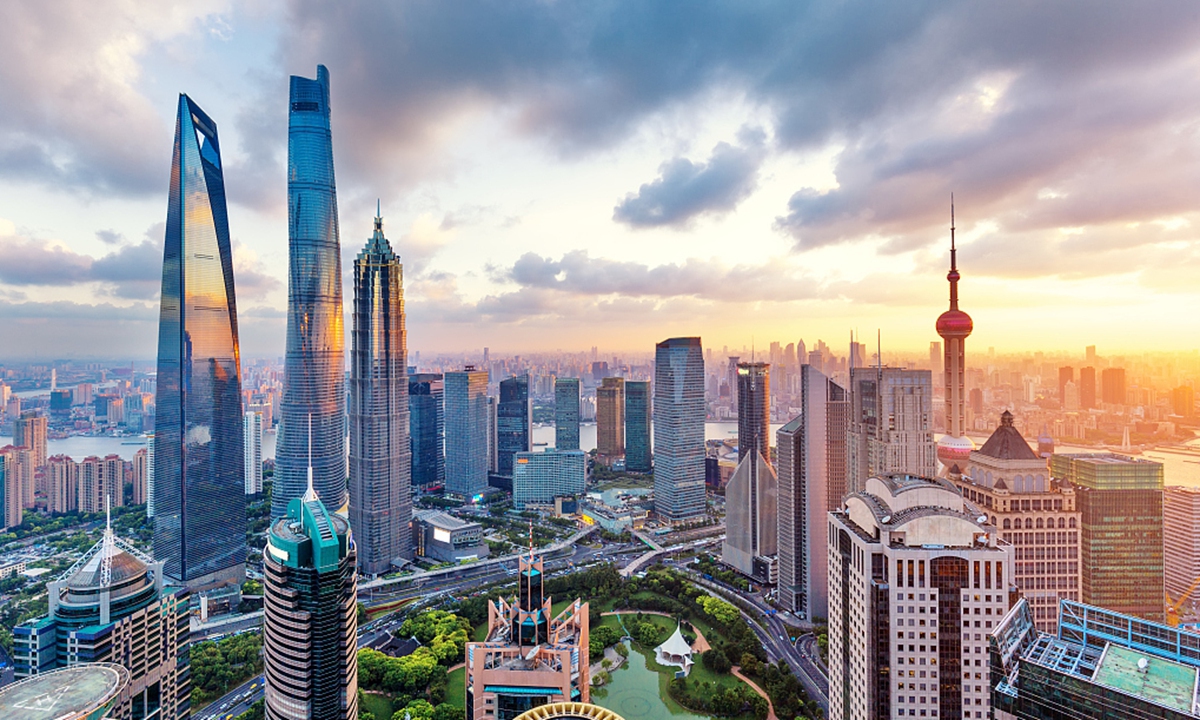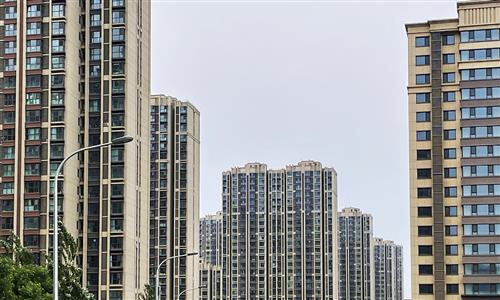
Lujiazui Photo:VCG
Aided by the government's ever-stronger fiscal and financial measures since the second half of the year, China's economy has regained much of the lost post-pandemic momentum and is projected to have grown by around 4.9 percent in the July-September quarter this year. Even if no more stimulus actions are taken in the fourth quarter, the world's second largest economy is well positioned to achieve the preset yearly target of 5.0 percent in 2023.During the National People's Congress (NPC) meeting in early March, the country's central government announced a plan to turbocharge the economy to a faster pace of development this year from the deep doldrums of merely 2.2 percent growth in 2022 when the country was entangled in draconian anti-pandemic control measures which stifled the economy.
The fourth quarter GDP growth is expected to reach 5.0-5.2 percent, setting a strong basis for the economy's development in 2024. The government's consistent investment in modern infrastructure projects scattered throughout the country's all terrains, the enterprises' investment in technology innovations and high-caliber manufacturing, and 1.4 billion people's increasing domestic consumption power will remain as the bedrock of China's growth.
In the past couple of months, the mainstream media in the US, led by the Wall Street Journal and the New York Times, have described China's economic prospects in a particularly darkening way, in their explicit hope that China could be dragged down by the US-style financial-system meltdown and economic implosion in 2008 and 2009. The Western media pundits asserted that China would trek the downhill road of Japan's "Lost Decades" since 1990 when the housing boom suddenly busted.
But China always gives the world "pleasant surprises". Not many years ago, Shenzhen was a fishing village, while Shanghai's Pudong was a largely barren place. Today, Shenzhen is one of the world's major tech innovation hubs, and Pudong is a major trade and money center. The Xiong'an New Area south of Beijing will be the next modern city, braving all the naysayers.
It is true that, currently, Chinese economy is not galloping at double-digit rates, but it is certainly not struggling, sputtering or faltering as claimed by the US and Western media. It is utter nonsense for them to spin that the engines firing up Chinese economy "are choked off," or "China's growth story is falling apart". The drumbeat of the negative analyses about China is purposely aimed to water down global investors' confidence and tarnish the country's global image and prestige.
No economy is able to expand indefinitely at China's historic double-digit rate seen in the past three decades. China's economy still pulsates with the full confidence of the policymakers, the well-educated people, and the country's growing entrepreneurial urge to be technologically self-reliant -- an important factor that doesn't fit neatly into many statistical models.
Though China's export-oriented sectors now face some serious headwinds due to sluggish foreign demand caused by monetary tightening and economic stagnation in the developed economies, time is still on China's side, as the country, already amassing US$18 trillion GDP, could manage to climb up the economic ladder at a pace that best suits itself, despite the doomsday saying by the Western media.
As reported by China's National Bureau of Statistics, the country's manufacturing PMI rose to 50.2 in September indicating expansion in the all-important manufacturing sector again. The private-sector manufacturing PMI hit 50.6 in September. Manufacturing production expanded at a faster pace, with the output index going up by 0.8 percent to a six-month high. In addition, the industrial output value, overall fixed-asset investment and domestic consumption have kept improving from July to September. And, tourism revenues and retail sales during the 8-day-long National Day and Moon Festival holidays in early October have surpassed the levels seen in 2019.
So by all metrics, China's economy is not contracting or facing a serious crisis like what is happening in the West. In 2023 and 2024, Chinese economy will continue to rise by around annualized 5 percent, expanding at a much faster pace than nearly all other major economies in the world.
It is wise and also far-sighted for the country to keep to its own set pace of economic growth through implementing the so-called "piecemeal stimulus" strategy, refraining from the "downpour stimulus" to give the economy a hefty shot in the arm that is unsustainable. In contrast to the massive 4-trillion-yuan colossal fiscal program approved in 2009 to lift the economy from a sudden stroke caused by the 2008 global financial crisis, Chinese policymakers have been carefully moderating the scale of stimulus in post-pandemic time.
The calculus behind the decision is that the policymakers want to make the economic recovery to be highly sustainable -- to last at least 10 years at an annual growth rate of around 5 percent, at a time of heightened global geopolitical tumult, signified by the US' growing erraticism and paranoid to fragmenting the world by ideological differences, and by instigating disputes and confrontations between blocs.
As the US government seems to be bent on stymieing China's development through trade and technology war, China should always keep sober-minded, getting the country's resources in good order and very well coordinated and planned in use. It doesn't make much sense to China to launch another 4-billion-yuan massive spending program this time that may hamstring the fundamentals of its future growth.
The prospects for restructuring and upgrading China's economy, including bolstering technology innovations, shoring up the role of private enterprises and free market competition, expanding opportunities for small and medium-sized businesses, allocating capital more efficiently and improving the balance between consumption and investment, are better than at any point in the past.
In the last quarter of 2023, the central government is believed to stick to the policy priorities as the reforms will target at ramping up domestic sales of big-ticket items, the housing and auto vehicles in particular. Chinese economists suggest the government cancel the restrictions imposed in the previous years on urban home purchases and extend more favorable policies to encourage electric vehicle consumption. Domestic consumption is expected to be further accelerated, to make up for the slowing growth of exports.
The author is an editor with the Global Times. bizopinion@globaltimes.com.cn



